The Japanese Diet: A Potential Solution for Slowing the Progression of Fatty Liver Disease in Seniors
Recent studies have indicated that the Japanese diet may slow the progression of non-alcoholic fatty liver disease (NAFLD) in seniors. This diet, rich in specific foods and food groups, can be a potential solution for this global health condition.
Recent studies have unveiled a fascinating discovery that could potentially revolutionize the health industry worldwide. These studies strongly hint towards the possibility that the traditional Japanese diet, renowned for its unique blend of nutrient-rich foods, may indeed play a pivotal role in slowing down the progression of non-alcoholic fatty liver disease (NAFLD) in seniors. This revelation shines a promising ray of hope for those battling this prevalent health condition globally. The Japanese diet is a culinary symphony of specific foods and food groups, carefully selected and prepared to maintain and improve health. It is largely based on fresh fruits, vegetables, lean proteins such as fish, and minimally processed foods. This diet, which is a cornerstone of Japanese culture, is not just about consuming food, but it's also about appreciating the natural flavors, textures, and colors of the ingredients used.

It is this remarkable diet that the studies have identified as a potential solution for NAFLD, an increasingly common global health issue. NAFLD is a condition that is swiftly becoming a significant concern for the health industry.
It is a silent disease, often unnoticed until it reaches its advanced stages, making prevention and early detection crucial. The disease is characterized by a buildup of fat in the liver, unrelated to alcohol consumption. With the global prevalence of this condition, the potential impact of the Japanese diet in managing it cannot be understated. The possibility of a diet-focused strategy in combatting NAFLD presents an intriguing, holistic approach to managing and potentially reversing this health condition. The Japanese diet, thus, may not only be a beacon of hope for those directly affected by NAFLD but may also offer profound insights into preventative healthcare methodologies.
Understanding Non-Alcoholic Fatty Liver Disease
Non-alcoholic fatty liver disease is a condition caused by the accumulation of excess fat in the liver. This condition can lead to severe liver damage, including fibrosis, if not managed effectively.
Non-alcoholic fatty liver disease, often abbreviated as NAFLD, is a significant health concern that arises due to the excessive buildup of fat in the liver cells, which is not a consequence of alcohol consumption. This condition, which may initially present subtly or even without apparent symptoms, can gradually escalate to more severe health implications if it's not addressed and managed appropriately. The term 'non-alcoholic' is crucial to distinguish this condition from the fat accumulation that typically occurs in the livers of heavy alcohol drinkers. NAFLD is a common condition, particularly in developed countries, and it's closely linked to obesity and diabetes, indicating the crucial role that a balanced diet and regular exercise play in maintaining liver health. It's also important to note that NAFLD is not always a static condition; it can progress or regress depending on various factors, including lifestyle changes.

If left unchecked, NAFLD can lead to severe liver damage, potentially resulting in fibrosis or even cirrhosis - a late-stage scarring of the liver caused by many forms of liver diseases and conditions. Fibrosis is particularly concerning as it involves the accumulation of excess fibrous connective tissue, which can disrupt the normal structure and function of the liver.
To effectively manage NAFLD, it's crucial to monitor one's health regularly, making dietary modifications, and maintaining an active lifestyle. Regular health check-ups are also highly recommended to monitor the condition and take timely action when needed. In sum, NAFLD is a serious health condition that warrants our attention due to its potential to cause severe liver damage, but with the right lifestyle choices and medical guidance, it can be effectively managed.
The Role of Japanese Diet in NAFLD
A Japanese diet, characterized by the consumption of high-quality foods, helps slow the progression of non-alcoholic fatty liver disease. The diet promotes the intake of soy products, seafood, seaweed, and other food groups that can potentially reduce the risk and slow the progression of NAFLD.
Delving deeper into the world of food science and nutrition, the Japanese diet, which is distinguished by the consumption of high-quality, nutrient-dense foods, is a powerful tool in slowing down the progression of non-alcoholic fatty liver disease (NAFLD). This dietary regimen is not just about eating, but it's about indulging in a comprehensive lifestyle change, honoring not just the taste but the nutritional value of every bite. The diet's cornerstone lies in the promotion of a diverse range of food groups like soy products, seafood, seaweed, and other nutritionally rich foods. These are not just high in flavor, but they're also packed with essential nutrients that can potentially reduce the risk and slow the progression of NAFLD. Soy products, for instance, are an excellent source of plant-based proteins and fiber, while seafood provides essential omega-3 fatty acids, known for their anti-inflammatory properties.

Seaweed, on the other hand, is a powerhouse of minerals and vitamins that support overall wellness. Moreover, this diet encourages mindful eating, emphasizing the importance of appreciating the food's inherent flavors and textures.
This practice not only enhances the dining experience but also promotes better digestion and nutrient absorption. Hence, the Japanese diet is more than just a diet—it's a holistic approach to health that empowers individuals to make conscious food choices, nourishing their bodies while reducing the risk of NAFLD. It's a testament to the profound power of food, and how it can be harnessed to support health and longevity.
Key Components of the Japanese Diet
The Japanese diet consists of 12 foods and food groups. These include rice, miso soup, pickles, soy products, green and yellow vegetables, fruits, seafood, mushrooms, seaweed, green tea, coffee, beef and pork.
The Japanese diet, an eclectic blend of culture and taste, is a fascinating journey through 12 different foods and food groups, each offering unique flavors and health benefits. The base of the meal has always been rice, a staple that provides energy and versatility to a variety of dishes. Complementing it is miso soup, a warm, savory broth that is often enjoyed at breakfast, but also finds its way into other meals, infusing them with its rich umami flavors. Another distinctive element in this food mosaic are pickles, known locally as Tsukemono. These are not your regular pickles; they are a beautiful assortment of fermented vegetables, each with a distinct taste and texture, acting as a perfect palate cleanser. Soy products, such as tofu and soy sauce, form a significant part of the Japanese diet, providing protein and enriching almost every dish with their diverse flavors. The diet also emphasizes the importance of fresh green and yellow vegetables, contributing to a balanced, nutrient-rich meal.
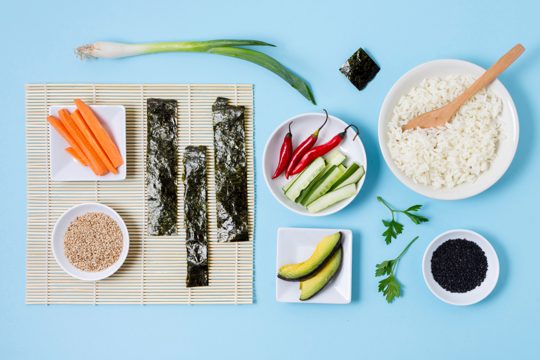
Fruits, too, are integral, often served fresh or as desserts, adding a natural sweetness and vibrancy to the cuisine. Seafood is another cornerstone of the Japanese diet, with the island nation boasting some of the freshest and most diverse seafood in the world.
Mushrooms, revered for their earthy flavors and health benefits, find their way into a myriad of dishes, from soups to stir-fries. Seaweed, another oceanic bounty, adds a delightful crunch and a unique taste to many dishes, not to mention its high mineral content. The diet is not complete without mentioning the beverages, primarily green tea, enjoyed throughout the day for its refreshing taste and health-boosting antioxidants. For a stronger kick, coffee is also a popular choice, enjoyed mostly in the mornings or as a mid-day pick-me-up. Lastly, although not as dominant as seafood, beef and pork are also part of the diet, often cooked in traditional ways that bring out their richness and succulence. In essence, the Japanese diet is a harmonious symphony of diverse foods and food groups, each playing a vital role in creating a wholesome, balanced, and incredibly flavorful eating experience.
Importance of Soy Foods
Soy foods are a key component of the Japanese diet. They are rich in proteins and low in fats, which can aid in managing NAFLD.
Soy foods, often considered the cornerstone of the traditional Japanese diet, play an indispensable role in promoting health and well-being. Championed for their impressive nutritional profile, these foods are packed with high-quality proteins that are not only vital for maintaining muscle mass, but also for supporting various bodily functions. In addition, they are notably low in fats, a trait that further enhances their appeal to health-conscious individuals. This combination of being protein-rich and low in fats makes soy foods an ideal dietary inclusion for those seeking to manage Non-Alcoholic Fatty Liver Disease (NAFLD). NAFLD is a condition that is increasingly becoming prevalent worldwide, and managing it effectively necessitates conscious dietary choices.
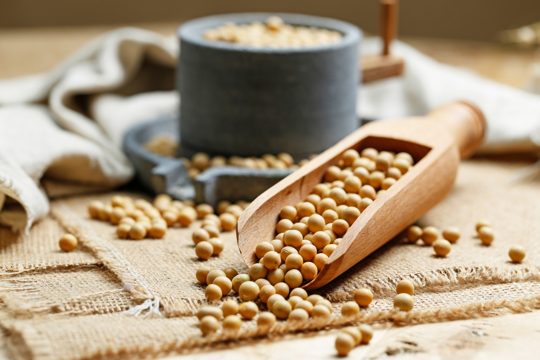
Soy foods, with their beneficial nutritional composition, can contribute significantly towards this end. Consuming them can help regulate liver fat levels, thus aiding in the prevention and management of this condition.
Moreover, the diversity of soy-based foods – spanning from tofu, tempeh, to edamame, and soy milk – ensures that incorporating them into one's diet never becomes monotonous or boring. So, whether you are someone grappling with NAFLD or just someone keen on embracing a healthier lifestyle, adding more soy foods to your meals can be a delicious and nutritious strategy. The Japanese diet, with soy foods at its heart, can indeed offer valuable lessons to us all about mindful and healthy eating.
Benefits of Seafood
Seafood, another vital part of the Japanese diet, is rich in omega-3 fatty acids. These nutrients have been found to slow the progression of fibrosis of the liver.
Seafood, a quintessential component of the Japanese diet, is teeming with omega-3 fatty acids - a nutrient celebrated for its numerous health benefits. Not just a flavorful feast to your taste buds, these marine delights are a powerhouse of wellness, particularly for liver health. This is because these omega-3 fatty acids, found in abundance in seafood, have been scientifically proven to slow down the progression of fibrosis of the liver, an ailment affecting numerous individuals worldwide. The exciting part about this is that you're not just giving your palate a treat by indulging in a savoury seafood meal. You're also actively contributing to the health and longevity of your liver, a vital organ with a multitude of functions in the body.

In essence, you're enjoying the best of both worlds - a gastronomic adventure and a health boost. Not only does this highlight the importance of a balanced diet, but it also underscores the profound wisdom inherent in traditional Japanese cuisine.
The people of Japan have long recognized the value of seafood as a critical component of their diet. Today, science affirms their traditional wisdom, showing us that a diet rich in seafood and consequently in omega-3 fatty acids can play an instrumental role in maintaining a healthy liver, and by extension, an overall healthier body. So, the next time you savour a piece of sushi or a mouthful of sashimi, remember, it's not just food - it's a health-enhancing, life-promoting experience.
Seaweed: A Superfood
Seaweed, a staple in the Japanese diet, is packed with vitamins, minerals, and antioxidants. It helps in detoxifying the body and slowing down the progression of NAFLD.
Seaweed, believed to be a cornerstone of the Japanese diet, is a powerhouse of health benefits that goes beyond mere nutrition. This humble marine plant is brimming with a plethora of vitamins, minerals, and antioxidants, all of which contribute significantly to our overall health. Packed with vitamin A, C, E, and K, seaweed is not just a simple food item, but a potent source of essential nutrients that the body needs to function optimally. Additionally, the minerals like calcium, iodine, and iron found in seaweed, are known to support bone health, thyroid function, and red blood cell production respectively. An intriguing fact about seaweed is its role in detoxification. The natural properties of seaweed make it an excellent aid in purifying the body, flushing out harmful toxins, and promoting a healthy immune system.
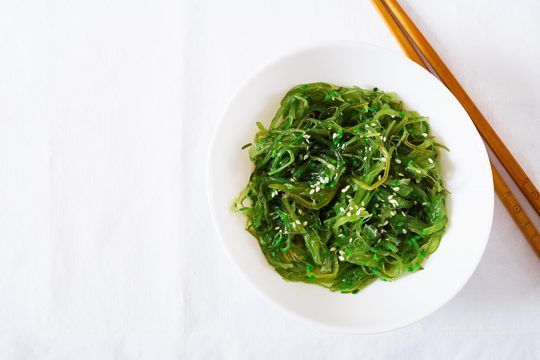
Its chlorophyll content acts as a natural detoxifier, aiding liver function and ensuring overall body cleanliness from within. This detoxifying effect is particularly beneficial for those seeking to maintain a healthy lifestyle or those on a detox regimen.
Moreover, studies have shown that seaweed can also play a pivotal role in slowing down the progression of Non-Alcoholic Fatty Liver Disease (NAFLD). NAFLD, a prevalent and often silent liver disease, can potentially lead to life-threatening conditions, making its management crucial. By incorporating seaweed into one's diet, individuals can benefit from its hepatoprotective properties, potentially halting the disease's progression and contributing to liver health. Therefore, the humble seaweed, with its rich nutritional profile and health benefits, is more than just a staple in the Japanese diet; it's a powerful tool in the pursuit of optimal health and well-being.
Other Foods From the Japanese Diet
Other foods from the Japanese diet, like green and yellow vegetables, fruits, mushrooms, and green tea, also contribute to slowing the progression of NAFLD. They provide essential nutrients and antioxidants that promote liver health.
Diving deeper into the heart of the Japanese diet, we unearth a cornucopia of wholesome foods that play a pivotal role in curbing the progression of Non-Alcoholic Fatty Liver Disease (NAFLD). These foods, ranging from vibrantly hued green and yellow vegetables to succulent fruits, hearty mushrooms, and refreshing green tea, offer more than just a feast for the senses. They are a veritable treasure trove of essential nutrients and potent antioxidants, each working in synergy to bolster liver health in a myriad of ways. For instance, the green and yellow vegetables—think broccoli, spinach, bell peppers, and pumpkins—are teeming with vital nutrients such as fiber, potassium, and vitamins A, C, and K. These not only fortify the body's overall immunity but also aid in the detoxification processes of the liver, thus reducing the load on this crucial organ.
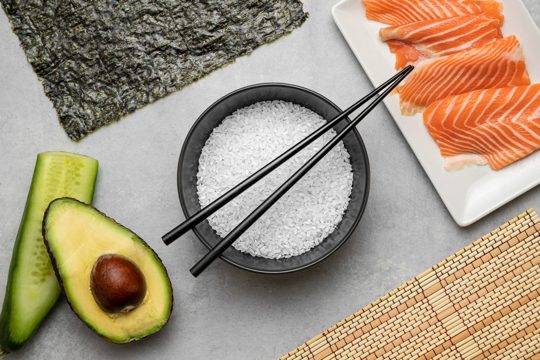
Succulent fruits like apples, oranges, and berries, on the other hand, are rich in antioxidants and fiber that help reduce inflammation and aid digestion, thereby promoting a healthier liver. Mushrooms, another staple in the Japanese diet, are a powerhouse of nutrients like selenium, riboflavin, and niacin, which are known to support liver function.
Lastly, the ritualistic consumption of green tea in Japan is not without reason. This soothing beverage is packed with antioxidants known as catechins, which are reported to improve liver function and slow the progression of NAFLD. In essence, the Japanese diet, with its focus on fresh, nutrient-dense foods, serves as a protective shield for the liver, contributing significantly to the slowing down of NAFLD progression. So, while it may seem like a simple dietary choice, it's really a profound commitment to holistic well-being.
The Role of Rice and Miso Soup
Rice and miso soup, the staples of Japanese meals, contain essential nutrients that can help in managing NAFLD. Rice and miso soup, the cornerstone of traditional Japanese cuisine, are not just delicious but also packed with vital nutrients, serving as an effective dietary aid in managing Non-Alcoholic Fatty Liver Disease (NAFLD).
These dishes, imbued with generations of culinary knowledge, significantly contribute to the overall health and well-being of individuals. Each spoonful of miso soup, a comforting broth made from fermented soybeans, is a powerhouse of proteins, vitamins, and minerals. It contains beneficial probiotics that can aid digestion, boost immunity, and reduce inflammation, all key elements in managing NAFLD. On the other hand, rice, especially brown rice, is a rich source of fiber, vitamins, and complex carbohydrates.
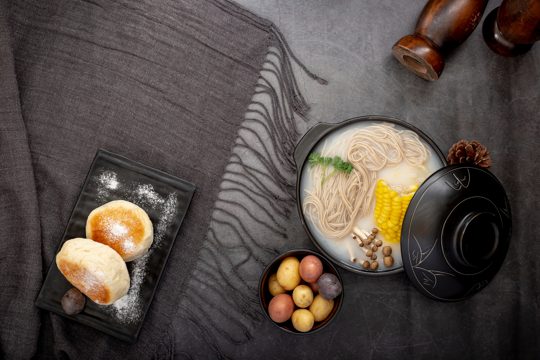
It can help control blood sugar levels, reduce cholesterol, and promote a healthy weight, factors that directly impact the prognosis of NAFLD. In addition to their nutritional value, these staples are incredibly versatile, fitting into a multitude of dishes.
They can be effortlessly incorporated into any meal, from hearty breakfasts to light dinners, ensuring you reap their health benefits without compromising on taste or variety. So, whether you're a fan of Japanese cuisine or looking to diversify your diet, including rice and miso soup in your meals can be a delicious and healthy step towards managing NAFLD.
Coffee, Beef, and Pork in the Japanese Diet
Coffee, beef, and pork are also included in the Japanese diet. While moderation is key, these food items also contribute to a balanced diet that can help manage NAFLD.
Coffee, beef, and pork are not just part of the typical Western menu; they also have their own significant place in the traditional Japanese diet. As anyone who has visited a bustling Tokyo café or dined in a Kyoto restaurant can attest, the rich aroma of freshly brewed coffee, the sizzle of marinated beef grilling to perfection, and the tantalizing taste of expertly prepared pork are all integral components of the Japanese gastronomic experience. However, it is not just about the culinary delight, these food items play a pivotal role in health too, particularly in managing Non-Alcoholic Fatty Liver Disease (NAFLD). While the Japanese diet is often associated with the likes of sushi, ramen, and tempura, the inclusion of coffee, beef, and pork adds a dimension of variety and nutritional balance. Coffee, for instance, is not just a morning pick-me-up or an afternoon refresher, but it is also known for its potential liver health benefits. It's packed with antioxidants and may aid in reducing inflammation, which is beneficial for those dealing with NAFLD.
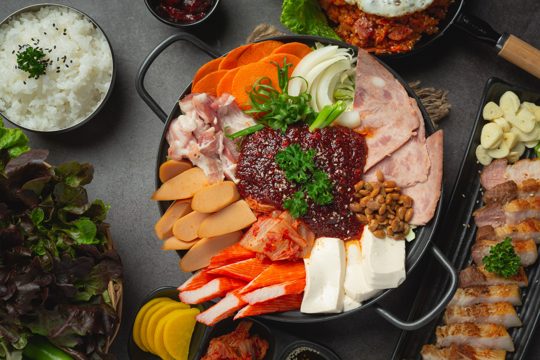
Beef and pork, on the other hand, are sources of high-quality protein and essential nutrients. These meat varieties provide the body with necessary amino acids and contribute to a well-rounded diet.
When consumed in moderation and cooked in a healthful way, they can support overall well-being and aid in the management of NAFLD. However, as with all things, balance and moderation are crucial. Overindulgence in any food, even those with health benefits, can lead to health problems. Therefore, while coffee, beef, and pork are part of the Japanese diet, they are consumed in a controlled manner, in conjunction with other food groups and healthy lifestyle practices, to ensure that they contribute positively to the fight against NAFLD, rather than exacerbate the condition.
Other Foods that Reduce NAFLD
In addition to the Japanese diet, foods rich in monounsaturated fats, fibre, and plant-based proteins can also help reduce NAFLD. Expanding on the topic of dietary choices for combating non-alcoholic fatty liver disease (NAFLD), aside from the Japanese diet, there's a whole spectrum of other food options that are beneficial.
These include foods that are rich in monounsaturated fats, fibre, and plant-based proteins. Monounsaturated fats, found in abundance in foods such as avocados, nuts, and olive oil, can help to decrease the levels of bad cholesterol in your body and replace them with good cholesterol. This aids in maintaining a healthy balance, which is instrumental in reducing the risk of NAFLD. Not to be overlooked is dietary fibre, a key player in digestive health. It aids in regulating blood sugar levels and can contribute to weight loss, both of which are essential in managing NAFLD.

Foods such as whole grains, fruits, vegetables, and legumes are excellent sources of fibre that you can easily incorporate into your daily meals. Moreover, consuming plant-based proteins like lentils, chickpeas, and quinoa is a great strategy to combat NAFLD.
These kinds of proteins not only provide essential nutrients but also help to reduce the intake of unhealthy fats typically found in animal proteins. So, adopting a diet that is not only rich in the beneficial elements of the Japanese cuisine but also includes a diverse range of foods rich in monounsaturated fats, fibre, and plant-based proteins, can significantly help in reducing the risk and managing the symptoms of NAFLD. It's about making mindful food choices that not only tantalize your taste buds but also contribute positively to your overall health and well-being.
Incorporating Japanese Elements into Ones Diet
Incorporating elements of the Japanese diet into ones daily meals can be an effective strategy in managing NAFLD. It promotes the consumption of high-quality foods that are beneficial for liver health.
Incorporating elements of the Japanese diet into one's daily meals can be a transformative and effective strategy in managing Non-Alcoholic Fatty Liver Disease (NAFLD). This approach seeks to cultivate a healthier lifestyle by promoting the consumption of high-quality foods that are not just tasty, but incredibly beneficial for liver health. The Japanese diet is well-regarded for its emphasis on fresh, natural, and minimally processed foods. It is a gastronomic celebration of seasonal produce, lean proteins, fermented foods, and whole grains. The high fiber content from the fruits, vegetables and whole grains, and the healthy fats from fish and seaweed can aid in weight management and control of liver enzymes.

The fermented foods, like miso and pickles, are excellent sources of probiotics, promoting overall gut health, which is essential in managing NAFLD. Moreover, the Japanese art of mindful eating, which involves appreciating the presentation, aroma, texture, and flavor of the food, can also be beneficial.
It encourages slower, more conscious eating, which can significantly improve digestion and absorption of nutrients. It also effectively promotes portion control, leading to a reduced caloric intake. So, let's embark on a culinary adventure with the Japanese diet, reaping its health benefits and savoring the exquisite flavors it has to offer. By making these changes, not only will we be taking steps to manage NAFLD, but we'll also be fostering a healthier relationship with food and enhancing our overall well-being.
Conclusion
The Japanese diet, with its emphasis on high-quality, nutrient-rich foods, offers a potential solution for slowing the progression of non-alcoholic fatty liver disease in seniors. Incorporating this diets elements into ones lifestyle can promote liver health and overall well-being.
The Japanese diet, celebrated globally for its emphasis on high-quality, nutrient-rich foods, presents an intriguing and potentially effective strategy for slowing the progression of non-alcoholic fatty liver disease, particularly in the senior population. This diet, an exquisite blend of raw and cooked ingredients, is abundant in fresh vegetables, fruits, fish, and whole grains - all food groups known to nourish the body and fortify the liver. Delving deeper into the specifics of this diet, it's clear that the emphasis is on balance and variety, providing a rich tapestry of flavors and nutrients to enjoy. The Japanese are renowned for their mastery of portion control, ensuring that the body receives just the right amount of sustenance without resorting to overeating. This aspect alone could be instrumental in managing and preventing liver disease.

Incorporating the key elements of the Japanese diet into one's lifestyle not only promotes liver health but also contributes significantly to overall well-being. The potential benefits extend beyond the liver, impacting heart health, weight management, and even mental clarity.
When we look at the Japanese diet, we see more than just a meal plan; we see a lifestyle choice, a commitment to honoring our bodies through mindful consumption. In conclusion, embracing a diet rich in high-quality, nutrient-dense foods, as exemplified by the Japanese diet, could be a powerful tool in the fight against non-alcoholic fatty liver disease among seniors. It's not merely about changing our eating habits, but more importantly about adopting a more balanced, holistic approach to our health and well-being.
About us
Welcome to SeniorCaresHub! Welcome to our comprehensive senior care destination! We pride ourselves on being a trusted resource for all things related to caring for aging loved ones. We understand the unique needs and challenges that come with senior care, and our mission is to provide you with the information, resources, and support you need to confidently navigate this journey and help you provide the best possible care for your aging loved one.

